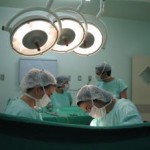C-sections, which are also known as Caesarean sections, are surgical procedures that some mothers undergo in order to deliver their babies. In a C-section two incisions are made through your abdomen and uterus. The abdominal incision will either be horizontal across your lower abdomen, approximately where your bikini line begins, or vertical from your belly […]
natural birth

Inducing labour for convenience: a good idea?
Induced labour is not a new medical practice and when there are complications during the later stages of pregnancy it is often the best option for the health of both the mother and her baby. However, over the last decade inducing labour has become more common, though not for medical reasons, but as a matter […]
Vasopressin
Vasopressin is a hormone that is very similar in both structure and function to oxytocin. It is released from the pituitary gland and does not increase until your third trimester of pregnancy. Vasopressin is an important hormone in the regulation of your contractions during labour and birth. As your labour progresses, your contractions will become […]
External Cephalic Version (ECV)
An ECV or external cephalic version is one method used avoid a breech birth by turning the baby into the vertex position. It has a 58% success rate of doing so and is only performed after week 37 of pregnancy when the likelihood of your baby moving himself into the breech position drastically decreases. An […]
Breech births
Breech births are births in which your baby is born in the breech or bottom-down position, that means her bottom or feet will come out first instead of her head. About 25% of all babies will be in the breech position when their mother is 32 weeks pregnant, by week 40 of pregnancy only 3% […]
Avoiding an episiotomy
Episiotomies can be scary and for this reason we are sure you are looking for any way possible to avoid them. You’re in luck, because we have two brilliant ideas that could help you out! The first method reduces your chances of needing an episiotomy by 6%, we know that doesn’t seem like a lot, […]
Afterbirth
The placenta is known as the afterbirth once you enter the third stage of labour. Unfortunately mum, once you’ve delivered your gorgeous baby your job is not quite done as you will then have to deliver the afterbirth. The best way to think about this part of labour is to remind yourself that after delivering […]
